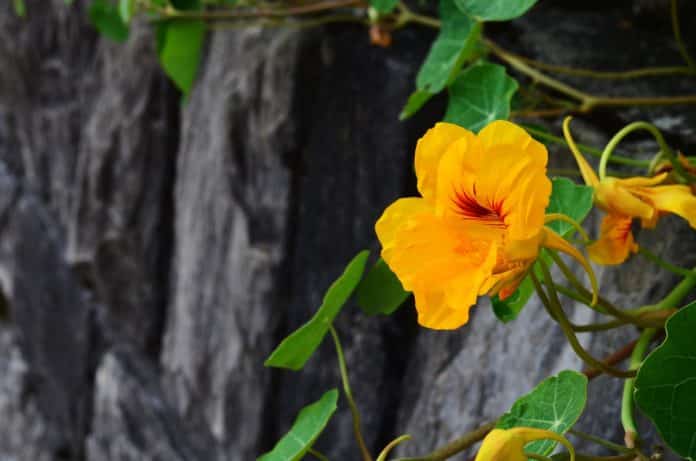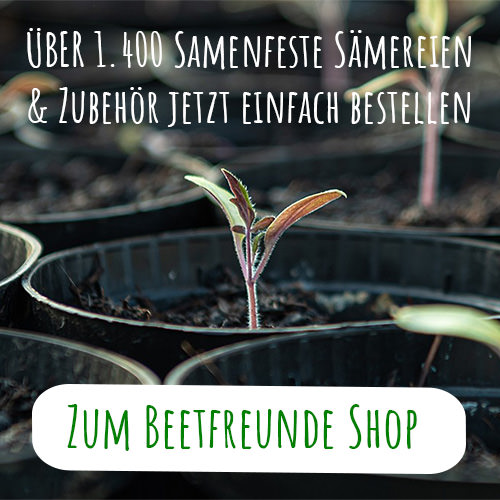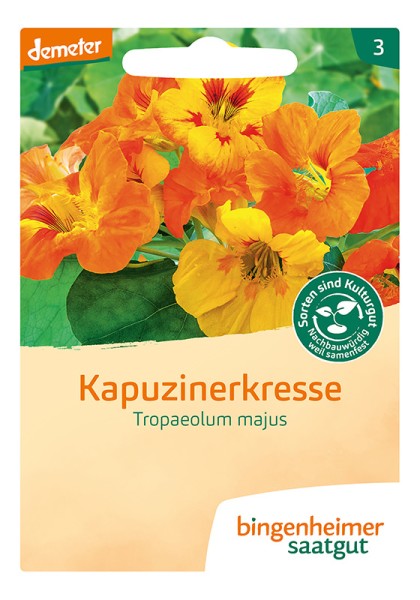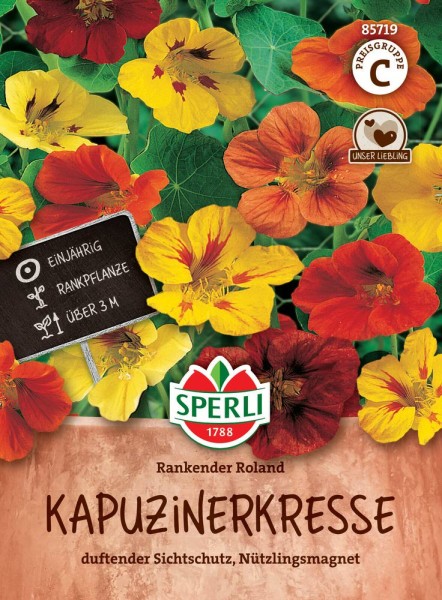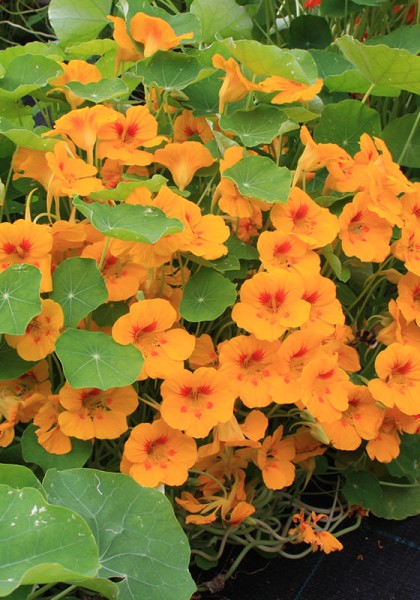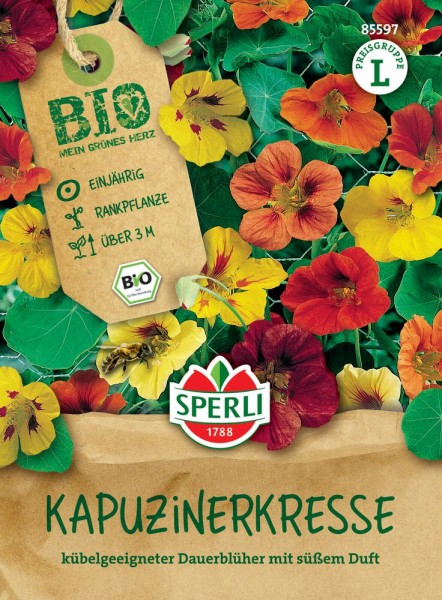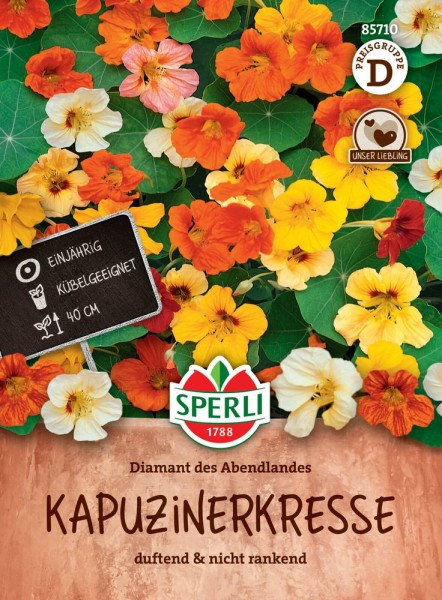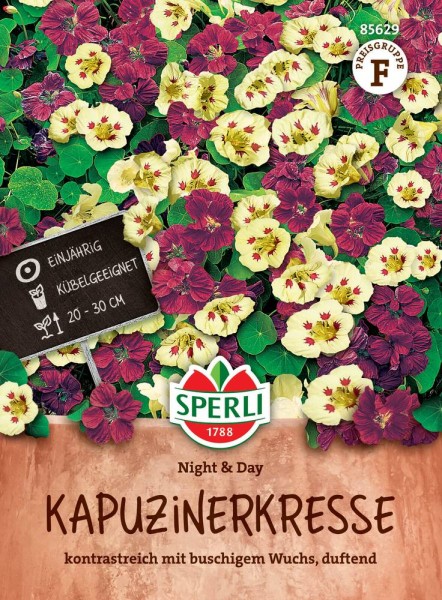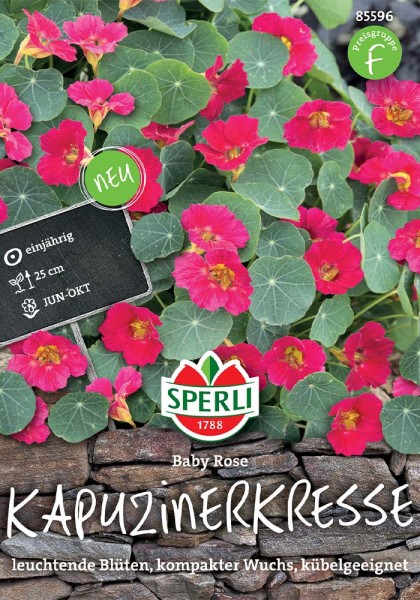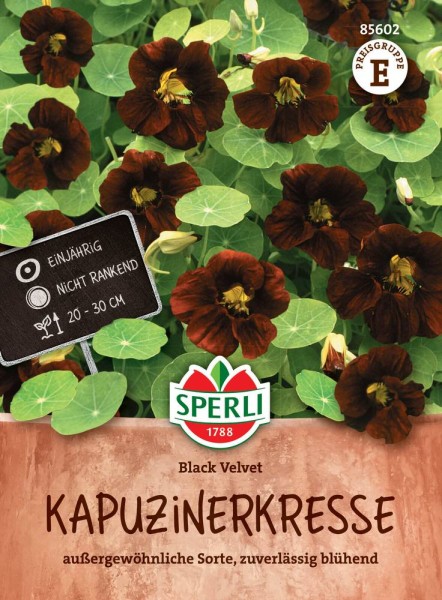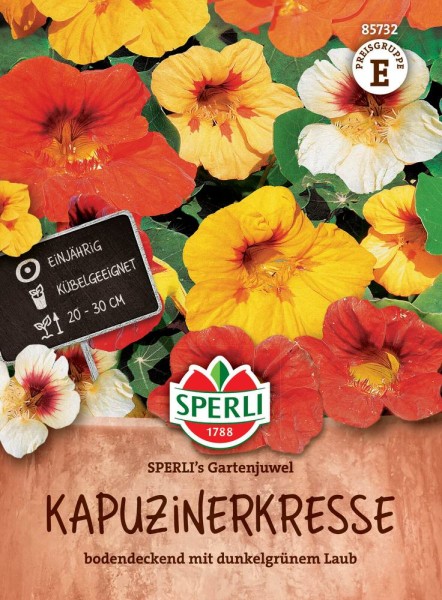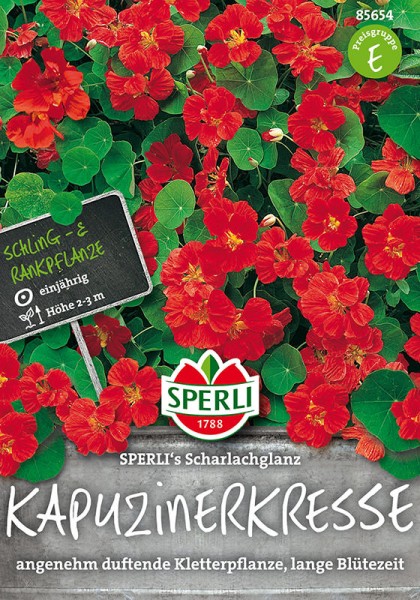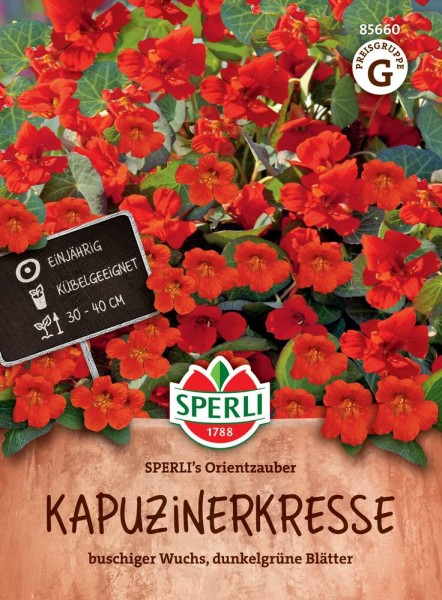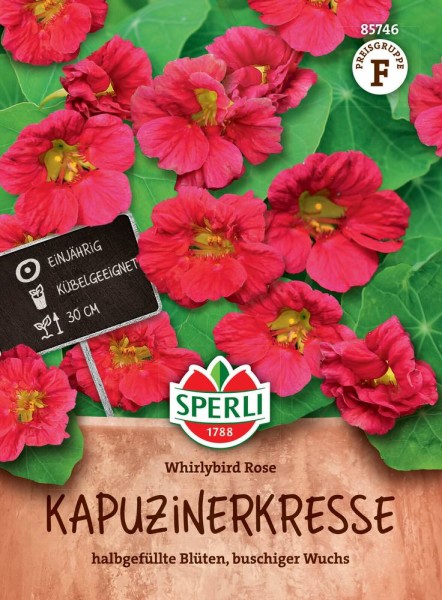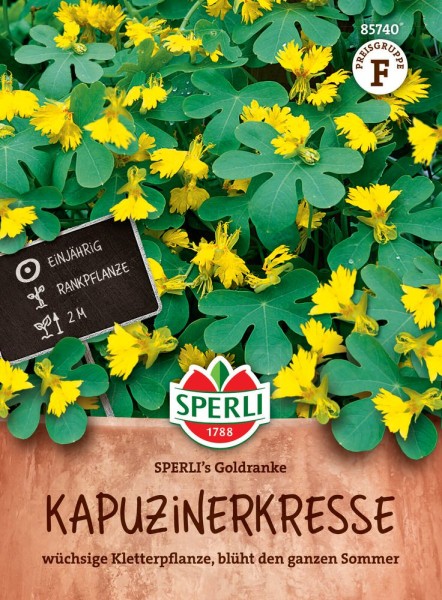The nasturtium is probably one of the most popular plants in the garden – and rightly so! It is low-maintenance, easy to take care of, and flowers beautifully. It is also edible and is even considered healthy; due to its high content of vitamin C and its antibiotic-acting mustard oil glycosides, the Great Nasturtium was named the medicinal plant of the year in 2013. It can be a practical addition to your garden.
Nasturtium varieties
The nasturtium is considered a classic ornamental and spice plant in the cottage garden. Originally, it came from South America. Botanically, it is its own separate genus of plants and family (tropaeolaceae). The most well-known in this family is probably the Great Nasturtium (tropaeolum majus,) with its large, funnel-shaped flowers, which look like hoods of the Capuchin monks when viewed from the side. Also found in some gardens is the golden vine variety canary nasturtium (tropaeolum peregrinum). It is a fast-growing climbing plant.
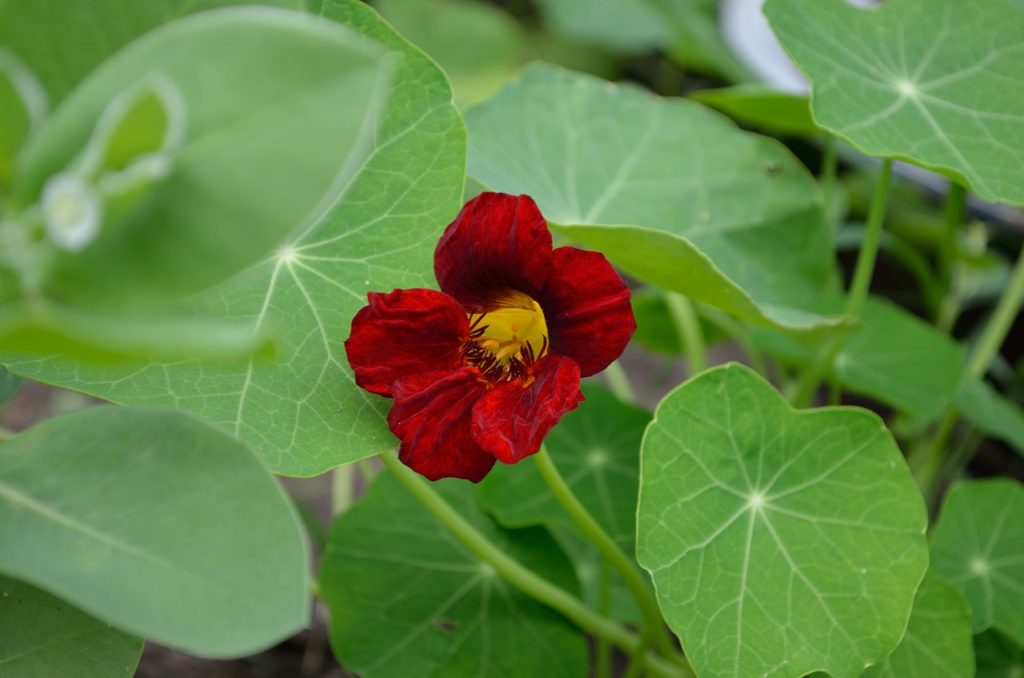
Depending on the variety, the nasturtium either grows up to three meters long tendrils or is compact and low to the ground. Bushy varieties are well suited as ground cover and will protect your soil from drying out. Which plant you grow in your garden is ultimately also a question of color: nasturtiums are available in intense red, sunny yellow, bright orange, subtle cream, or in two-tone variants. If you can’t decide, you can choose a variety and create a sea of color. Nasturtiums are available with filled and unfilled flowers. If you want to attract bees, we recommend unfilled varieties.
Sow nasturtium
The nasturtium is actually a perennial but usually only lasts one season in this country, as they can’t stand up to frost. For this reason, you should sow them in the garden from mid-May on, after the last frost. Put seeds in the ground about ten centimeters apart, two centimeters deep. Depending on the variety, the distance of the rows should be about 20 to 30 centimeters apart. Seeds germinate after about 10 to 14 days, depending on when you plant them. You can also cultivate the nasturtium in a warm place on a windowsill or in the greenhouse .
Location and care
Nasturtiums are considered very easy to care for and quite low maintenance. They grow best in a warm, sunny location, but can also thrive in partial shade. They don’t have any special soil requirements but do best in soil that is humus-rich and fertile.
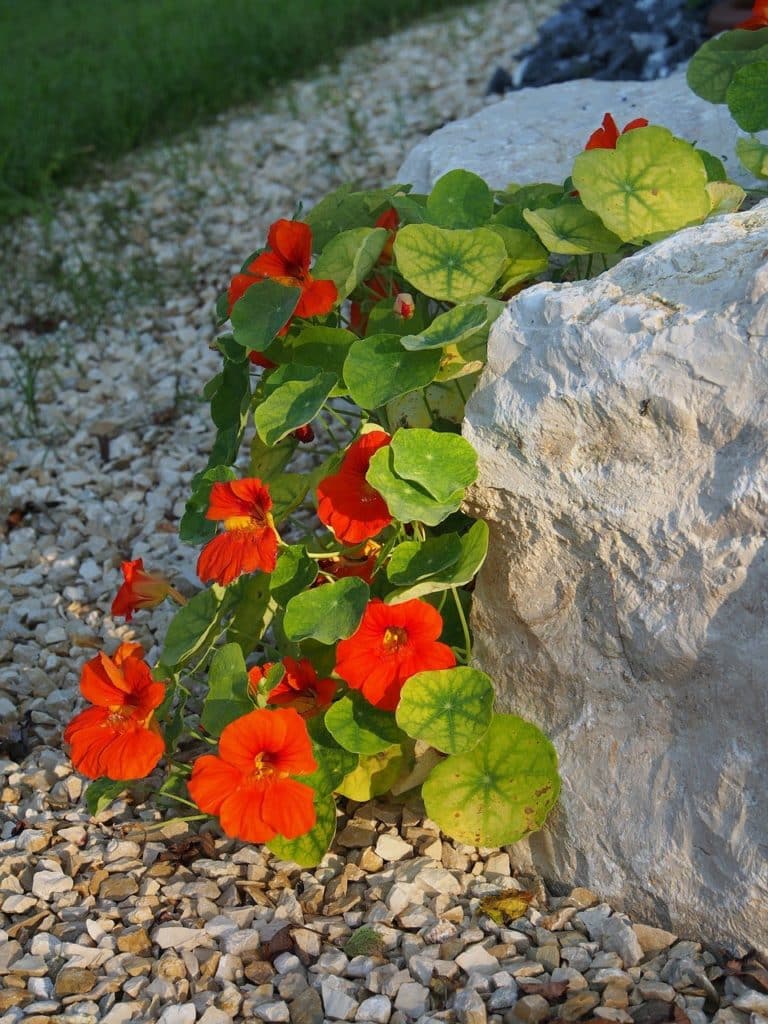
For a plant that blossoms a lot, you should fertilize it carefully; too much fertilizer can cause it to form more leaves than flowers. Depending on the time of planting, it blooms from July to the first frost. Climbing nasturtiums need support. You can plant them next to a trellis or guide them up a fence as an attractive decoration. Nasturtiums are, unfortunately, very susceptible to aphids. On the other hand, this can be an advantage, because they will attract the destructive pests away from your other plants! They can also help with snails. If the location is too shady, the plants will get moldy in very humid weather.
Harvest and use
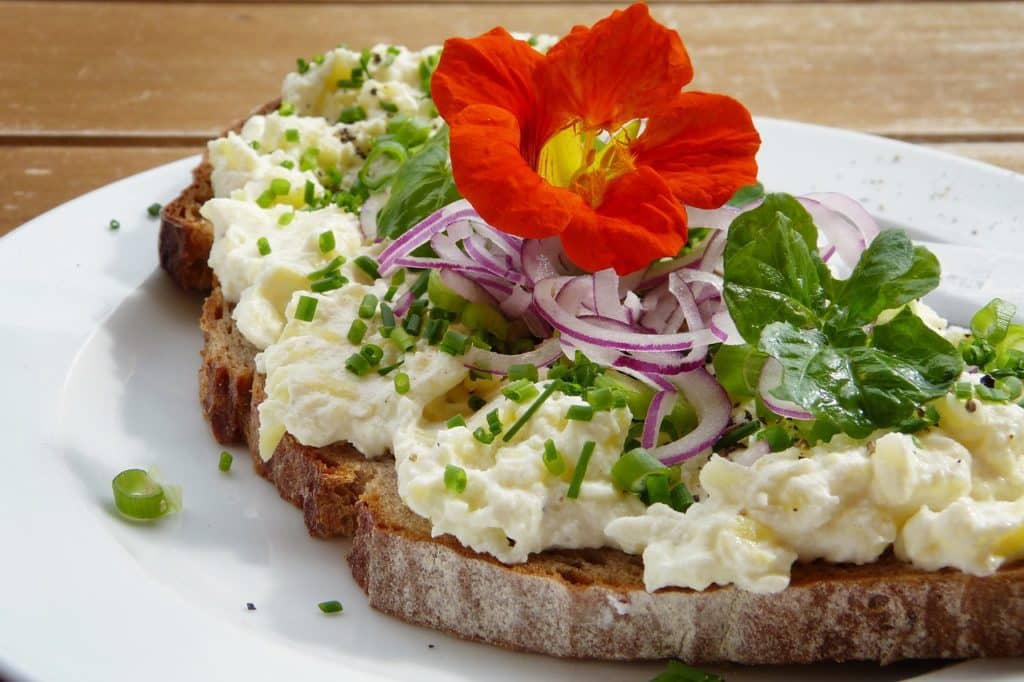
Depending on the time of planting, you can harvest Nasturtiums for the first time about four to six weeks after sowing. Do not cut off the whole plant; just trim off a few leaves at a time with a sharp knife so you will always have fresh leaves available until the first frost. Almost every part of the full-grown nasturtium is edible. You can use leaves and flowers for salad, cottage cheese, and herb butter. They are spicy and have a cress-like, spicy, peppery aroma. In addition, you can use buds and seeds to replace capers. Another way to enjoy them is to turn the fresh leaves into pesto .

